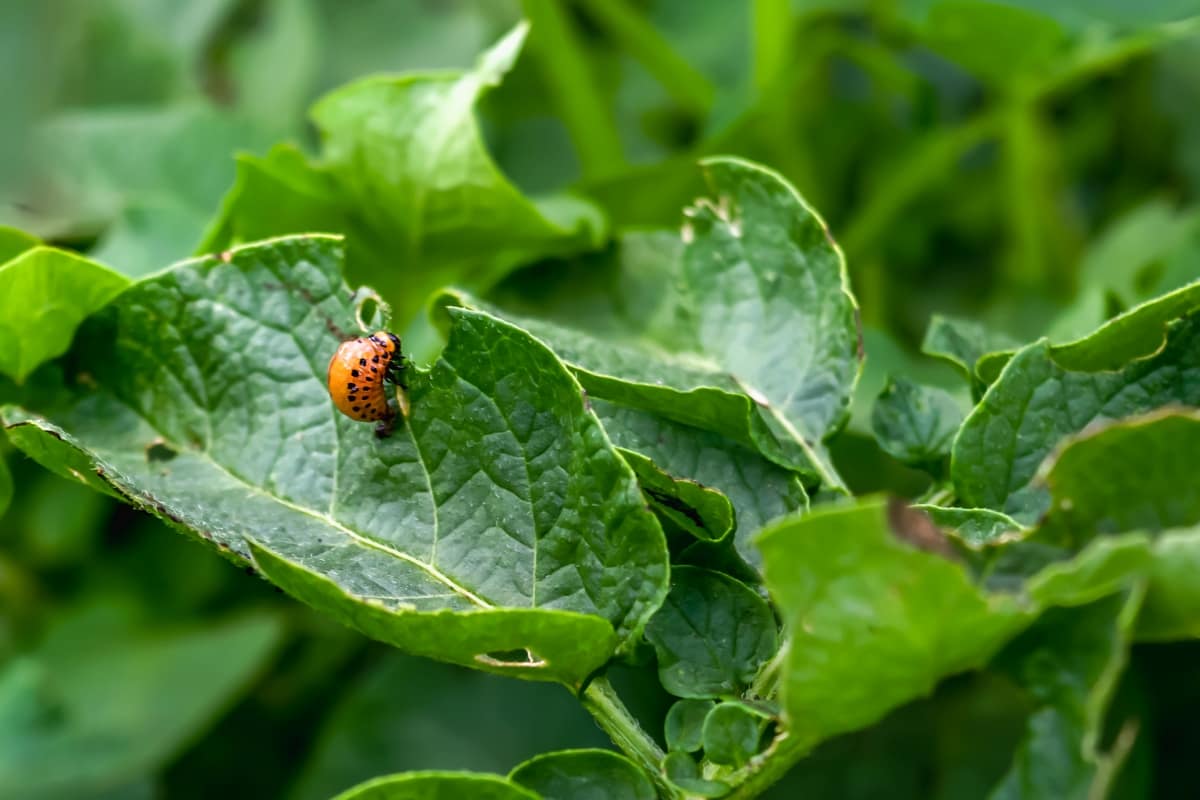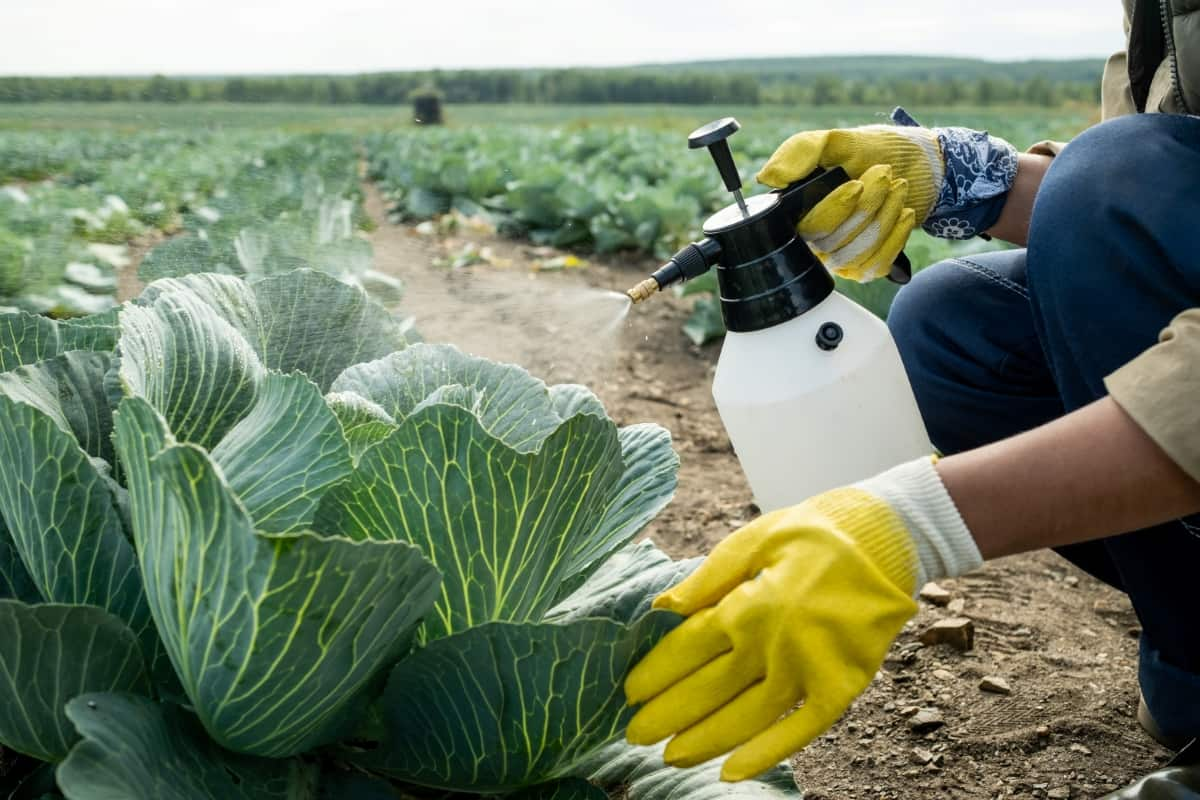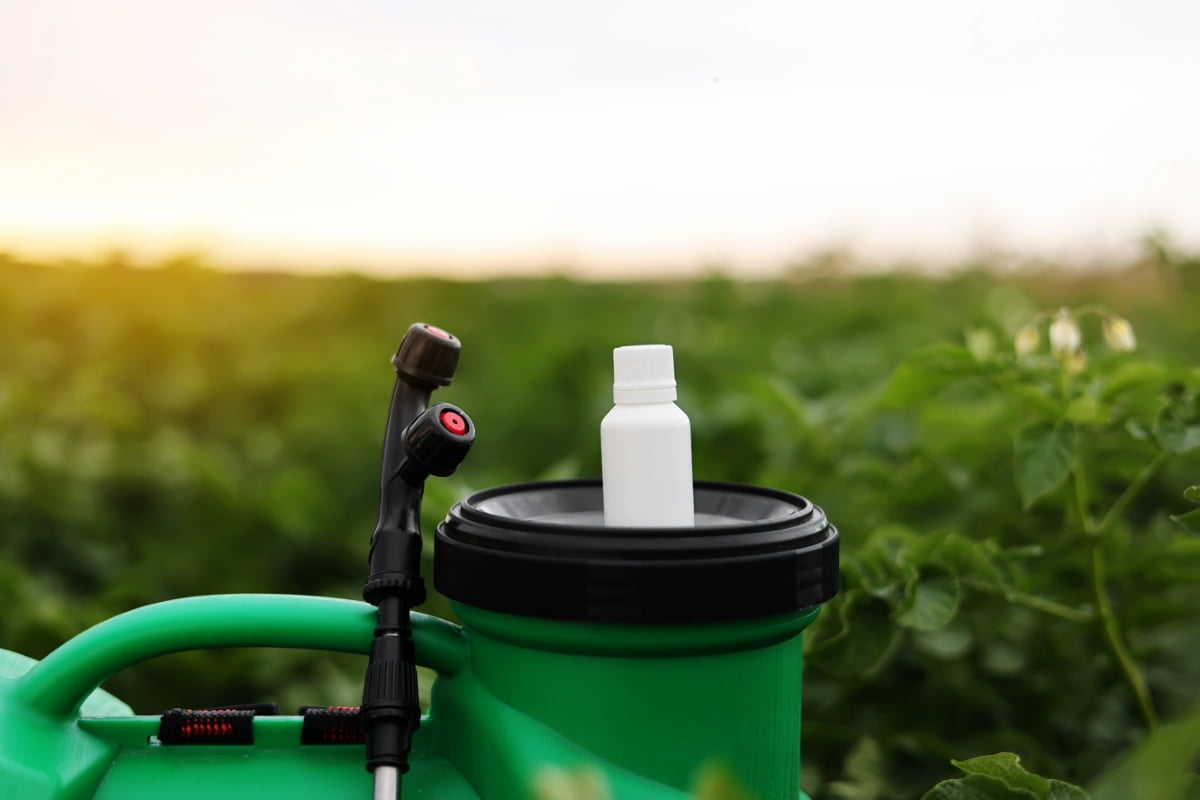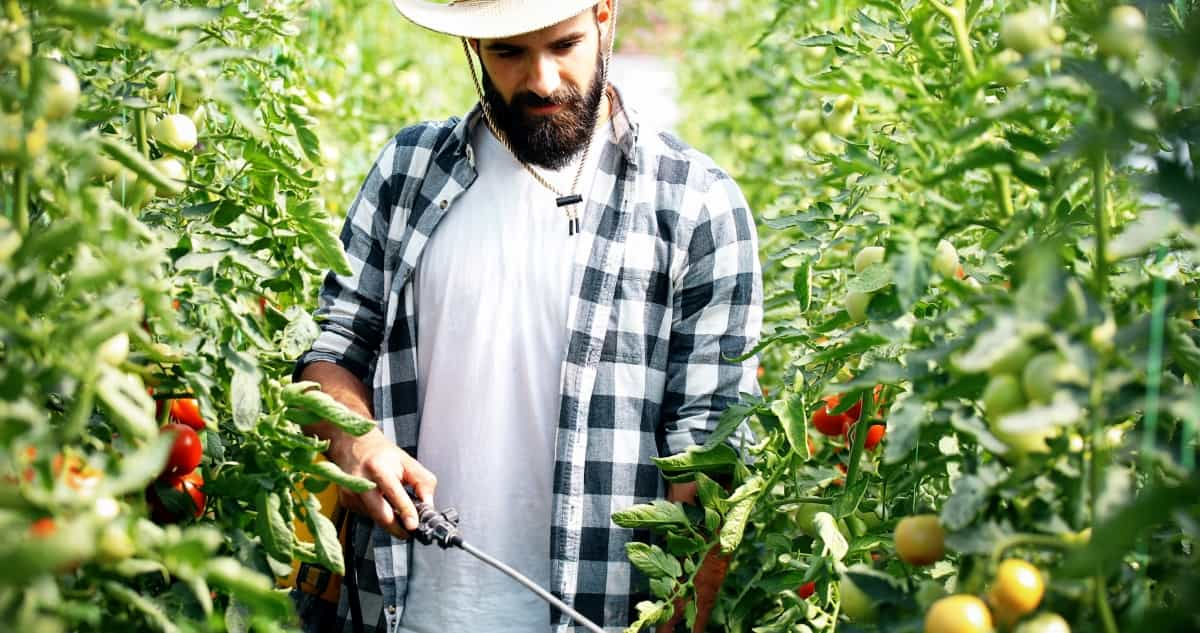Plant disease management is an important aspect of maintaining the health and productivity of plants. It involves many strategies and techniques aimed at preventing, controlling, and minimizing the impact of plant diseases. Simply put, it is all about keeping plants healthy and disease-free.

10 Best Plant Disease Management Methods
Biological Control Methods for Plant Diseases
These methods rely on natural enemies or beneficial microorganisms to suppress the growth and spread of plant pathogens. The effective biological control method for plant diseases is the use of biocontrol agents such as predators, parasitoids, or pathogens that specifically target the disease-causing organisms.
Another strategy is using antagonistic microorganisms like bacteria or fungi that have been shown to inhibit the growth of plant pathogens. These biocontrol agents can be applied directly to plants or used as seed treatments. By rotating crops with different susceptibility levels to specific diseases, farmers reduce pathogen buildup in the soil over time.
Chemical Control Strategies for Plant Disease Management
Chemical control strategies play a crucial role in managing plant diseases. These ways involve the use of specific chemicals to target and eliminate pathogens that cause diseases in plants. The first step in chemical disease management is identifying the specific pathogen causing the issue. This allows for targeted treatment with appropriate chemicals.
Fungicides are commonly used to combat fungal infections, while bactericides can be applied to control bacterial diseases. However, it’s important to note that while chemical treatments can be highly effective, they should only be used as part of an integrated approach alongside other disease management practices like cultural and genetic resistance methods.
Integrated Pest Management for Plant Diseases
Integrated Pest Management (IPM) is a comprehensive approach to managing plant diseases that focuses on long-term prevention and control. The key component of IPM is monitoring and identifying pests or diseases early on. This allows for targeted interventions, such as introducing natural predators or using biological controls, like beneficial insects or nematodes, which can help suppress disease-causing organisms. Cultural practices are also an important aspect of IPM.
In case you missed it: Management of Fungal Diseases in Terrace Gardens: How to Control and Prevent with Natural and Organic Treatment

These include selecting resistant varieties, practicing crop rotation, maintaining proper sanitation measures, and improving soil health through organic amendments. By creating unfavorable conditions for pathogens to thrive, farmers can reduce disease outbreaks. Another strategy in IPM is mechanical control methods. This involves physically removing infected plants or parts of plants to prevent further spread. It may also involve implementing barriers or traps to prevent pests from accessing crops.
Cultural Practices for Controlling Plant Diseases
Crop rotation – This involves alternating different types of crops in a particular area from one season to another. It helps disrupt the life cycle of pathogens that are specific to certain plants, reducing their ability to survive and spread from year to year.
Proper spacing between plants – Crowded planting can create conditions that favor disease development by restricting air circulation and promoting higher humidity levels within the foliage. By providing adequate space between plants, you allow for good airflow, which helps prevent the buildup of moisture and reduces the likelihood of disease outbreaks.
Pruning – Regular pruning also plays a significant role in preventing plant diseases. Removing dead or infected plant material prevents pathogens from spreading further within your garden. Additionally, pruning promotes good air circulation by opening up dense foliage areas, thus reducing humidity levels that can contribute to disease development.
Genetic Resistance in Plant Disease Management
Genetic resistance in plant disease management is a powerful tool that allows plants to defend themselves against various pathogens. To achieve genetic resistance, researchers identify and incorporate specific genes into crop plants that confer resistance to particular diseases. These genes can come from different sources, such as wild relatives of cultivated crops or even other unrelated species with desirable traits. By incorporating these resistant genes into commercial varieties through breeding techniques or genetic engineering, growers can reduce their reliance on minimizing yield losses caused by diseases.
Physical Control Measures for Plant Diseases
The common physical control measure for plant disease is the use of barriers such as nets or fences to keep pests and pathogens away from plants. This can be particularly effective for protecting crops from insect vectors that transmit diseases. Another physical control measure is sanitation, which involves removing infected plant material or debris that could harbor pathogens. This helps to reduce the source and spread of diseases within a planting area.
Mulching is another method used to manage plant diseases. Proper mulch application can suppress weed growth, enhance soil moisture retention, regulate soil temperature, and create a barrier between soil-borne pathogens and susceptible plants.
Quarantine and Exclusion Techniques for Plant Disease Prevention
One common quarantine technique is imposing strict regulations on the import and export of plants, seeds, and other agricultural products. This helps prevent new diseases in an area or country. Inspections at borders ensure that potentially infected materials are not allowed to enter.
In case you missed it: How to Treat Plant Diseases with Homemade Sprays: DIY for Controlling Plant Diseases

Exclusion techniques include physical barriers such as fences and nets to keep pests away from vulnerable plants. Educating farmers about the importance of quarantine measures is also vital for effective disease management. Awareness programs can help them understand how implementing these techniques can safeguard the health of their crops.
Plant Health Monitoring and Surveillance
One way to monitor plant health is by visually observing the leaves, stems, and fruits for any abnormalities such as discoloration, wilting, or deformities. It’s important to note that different diseases may display different symptoms, so it’s essential to familiarize yourself with common plant ailments.
Another effective method is using traps or sticky cards placed strategically in the garden to capture insects. By analyzing the captured pests, we can determine if they carry any diseases harmful to our plants. Regularly checking soil conditions is also vital in plant health surveillance. Testing soil pH levels and nutrient content can help prevent nutrient deficiencies that weaken plants’ immune systems.
Soil Management Practices to Prevent Plant Diseases
Maintaining proper drainage is an important aspect of soil management. Excess water can lead to fungal infections, so it’s essential to ensure that the soil has good drainage characteristics. This can be reached by adding organic matter to promote better water movement. Another key practice is crop rotation.
Planting different crops in a specific sequence helps break the life cycle of disease-causing organisms that may have built up in the soil. It also ensures that nutrient demands are balanced and reduces pest pressure. In addition, using cover crops can help suppress weed growth, improve soil fertility, and enhance beneficial microbial activity. Some cover crops even release natural compounds that inhibit certain pests and diseases.
Post-harvest Disease Management Techniques
Post-harvest disease management techniques play a crucial role in ensuring that the harvested produce remains healthy and free from any potential diseases or infections. Storing crops in optimal conditions is essential to prevent the growth and spread of diseases. This includes maintaining appropriate temperature, humidity levels, and ventilation to discourage fungal growth and minimize moisture-related issues.
Regular cleaning and sanitization of storage facilities are vital to remove any potential sources of contamination. This can help eliminate pathogens that may be present on equipment, containers, or surfaces. Carefully inspecting harvested crops for signs of disease allows for the detection before it spreads further. Sorting and grading also help separate healthy fruits or vegetables from diseased ones to minimize contact between them.
Using specialized packaging materials that limit moisture accumulation can reduce the risk of post-harvest decay caused by bacterial or fungal infections. Applying quarantine treatments such as heat treatment or irradiation can effectively eradicate pests or pathogens present on harvested crops without compromising their quality.
Frequently Asked Questions (FAQ) on Plant Disease Management
How Do I Recognize Common Symptoms of Plant Diseases?
Identifying specific symptoms will depend on the type of disease affecting your plants. However, some common indicators include discolored or spotted leaves, wilting or drooping foliage, stunted growth, lesions on stems or fruit, abnormal leaf drop, or an overall decline in health. It’s important to regularly monitor your plants for any changes that may signal a potential disease issue.
Can Beneficial Insects Help with Disease Management?
Yes. Beneficial insects feed on harmful pests that may transmit diseases to your plants.
Is Pruning Important for Disease Prevention?
Pruning helps improve airflow within the canopy of plants, which reduces moisture levels – creating an unfavorable environment for many fungal pathogens.
In case you missed it: Natural Remedies for Managing Viral Plant Diseases

Conclusion
Implementing effective plant disease management strategies can significantly increase crop yield. Plant disease management methods that focus on biological control or integrated pest management (IPM) minimize the use of harmful chemicals, protect the environment, and promote sustainable agriculture. By managing these diseases effectively, we can preserve biodiversity and promote sustainable farming practices.
- Deworming Schedule for Dogs/Puppies: A Beginners Guide
- How to Prevent and Control Parasites in Goats
- Beneficial Insects in Pest Management
- Natural Solutions for Pest Control in Flower Gardens
- Types of Fungicides Used in Agriculture
- Common Issues in the Fruit Development Stage of Pomegranate Farming
- Fruit Development Issues in Papaya: Easy Solutions and Treatment
- Soil-Borne Diseases and How to Protect Your Plants
- Practices to Prevent Disease Spread in the Garden